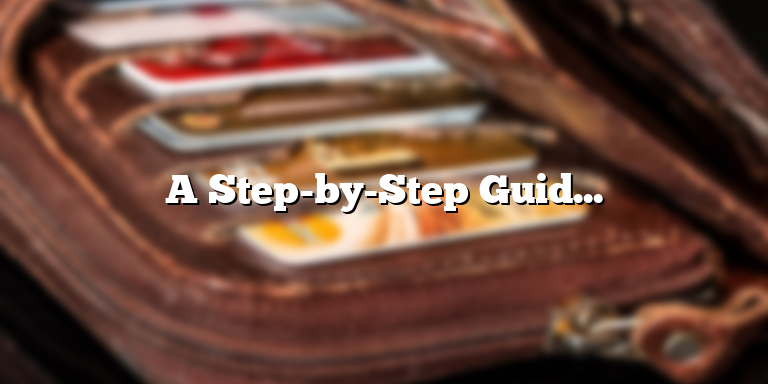
Benefits of Sponge Bathing for Newborns
As a parent, it is important to keep your newborn clean and fresh. While it may be tempting to give your baby a tub bath every day, it is not recommended by pediatricians until your baby’s umbilical cord stump falls off. Until then, sponge bathing is the best option for cleaning your baby while keeping them comfortable and happy.
Sponge bathing is a gentle way to clean your baby without causing irritation or discomfort to their delicate skin. Newborn skin is very sensitive and can easily dry out or become irritated, which is why sponge bathing is an ideal way to keep your baby clean and fresh.
One of the benefits of sponge bathing is that it can help prevent infections in your baby. By keeping their skin clean, you reduce the risk of bacterial infections and other skin irritations. Sponge bathing can also prevent diaper rashes, which are common among newborns due to the sensitivity of their skin.
Another benefit of sponge bathing is that it can be a relaxing and bonding experience for both you and your baby. It allows you to spend quality time with your little one and create a calm and peaceful environment for them. Your baby will feel safe and secure in your arms while you gently clean their body, helping to strengthen your bond with each other.
Lastly, sponge bathing is a cost-effective way to keep your baby clean. Unlike tub bathing, sponge bathing does not require a lot of water or expensive bath products. All you need is a soft, clean washcloth, warm water, and a towel, making it a practical and efficient way to clean your little one.
In conclusion, sponge bathing is a gentle, safe, and effective way to keep your newborn clean and fresh. Not only is it beneficial for your baby’s delicate skin, but it also creates a relaxing and bonding experience for both of you. So, embrace the simplicity of sponge bathing and enjoy this precious time with your little one.
What You Will Need
When it comes to giving a sponge bath to a newborn, having the right supplies is crucial. Here’s what you will need:
1. A Basin of Warm Water
The temperature of the water is important, as newborns have delicate skin. Fill a clean basin with warm water, making sure it’s not too hot or too cold. Dip your elbow into the water to test the temperature. If it feels too hot or too cold, adjust accordingly.
2. Mild Soap
Babies have sensitive skin, and harsh soaps can irritate their delicate skin. Choose a mild soap that is designed specifically for infants.
3. Soft Washcloths
You’ll need a soft, gentle washcloth to wipe your baby. Avoid rough washcloths that could irritate your baby’s skin. A gentle, soft washcloth is all you need.
4. A Towel
Choose a soft and absorbent towel to dry your baby. You want to ensure that your baby is dry to avoid diaper rash and other skin irritation. Pat your baby dry gently, avoiding any rubbing.
5. A Diaper
After the sponge bath, your baby will need a clean diaper. Have a diaper ready and waiting so that you can quickly change your baby after the sponge bath.
6. A Change of Clothes
It’s not uncommon for babies to pee or poop during their sponge bath, so having a change of clothes handy is essential. Choose comfortable clothes that are easy to put on and take off.
Step-by-Step Sponge Bathing Process
As a new parent, it can be intimidating when it comes to giving your newborn their first bath. It’s natural to be concerned about hurting your little one or doing something wrong. However, with the right guidance and a little bit of practice, you’ll be a pro at caring for your little one in no time. Sponge bathing your newborn is one of the most recommended and safest ways to keep them clean until their umbilical cord stump falls off and they are ready for tub baths. Here is a step-by-step guide to help you achieve a successful and safe sponge bathing experience for your newborn baby.
Supplies Required for Sponge Bathing
Before you start, ensure you have all the supplies you will need for sponge bathing. You should have a washcloth, a bowl of warm water, a towel, and a clean diaper. Make sure everything is within reach before you start because you will need both hands to hold your baby throughout the process.
Preparing Your Baby
Set up a safe and comfortable area for your baby’s sponge bath, such as a changing table with a soft towel underneath. Make sure the room is warm, and the ventilation is good to avoid discomfort or agitation. Keep your supplies close, and always stay with your baby and never leave them unattended.
Washing Your Newborn
You can use plain water or a mild baby soap, but it is recommended to use only water on your newborn baby’s delicate skin. Wet the washcloth and start washing your baby from head to toe, paying extra attention to folds and creases, such as under the neck, behind the ears, and in the genital area. Be gentle while washing your baby, and use a washcloth to prevent accidentally submerging them in water. Rinse well with warm water and make sure all the soap or suds are removed from your baby’s skin.
Drying and Diapering Your Baby
After rinsing, you can gently pat your newborn dry with a soft towel, or you can choose to air-dry them. If your baby has diaper rash, apply diaper cream after drying and before putting a new diaper on.
Final Thoughts
Sponge bathing your newborn is an exciting yet delicate process. Never rush through it and always remain gentle with your newborn. Take your time, follow the steps above, and you’ll soon discover that giving your baby a sponge bath can become one of the most cherished moments for you both.
How Often to Sponge Bathe Your Baby
Caring for a newborn baby can be quite a challenge, especially when it comes to bathing them. One of the most common questions new parents ask is how often a baby should be bathed. Sponge bathing is a great option for those first few weeks of a newborn’s life. As a general rule, newborns only need to be sponge bathed 2-3 times a week until their umbilical cord stump falls off and their circumcision heals.
Newborn babies cannot regulate their body temperature very well, and they can easily become cold if they’re exposed to water for too long. Sponge baths are an effective and gentle way to keep your baby clean while preventing them from getting too cold. As your baby gets older and more active, you can start giving them regular baths, but for now, let’s focus on how to sponge bathe your newborn.
Some parents may prefer to bathe their baby every day, but it’s important to note that too much bathing can actually be harmful to your baby’s delicate skin. Bathing your baby too frequently can strip their skin of its natural oils, which can lead to dryness, irritation, and even eczema. Stick to the 2-3 times a week guideline, and only give your baby a bath every day if they have a specific need, such as a diaper blowout or spit-up.
If you live in an area with hard water, it’s important to take extra care when bathing your baby. Hard water can be harsh on delicate skin, and it can also cause soap residue to build up, which can further dry out your baby’s skin. Using a gentle, soap-free cleanser and moisturizing your baby’s skin after the bath can help protect their skin from the effects of hard water.
Remember, the most important thing is to keep your baby clean and comfortable. Pay attention to your baby’s cues, and don’t be afraid to adjust your bathing routine accordingly. If your baby seems to enjoy baths and is not showing any signs of skin irritation or dryness, you can increase the frequency of their baths. If they seem uncomfortable or their skin is becoming irritated, it’s time to scale back. Every baby is different, and it may take some trial and error to find the bathing routine that works best for your little one.






